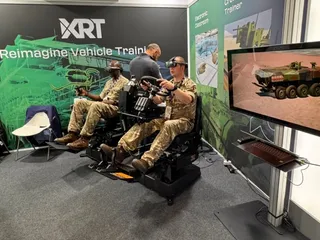AAP Offers Recommendations to Improve Pediatric Trauma Care
Contact Our Team
For more information about how Halldale can add value to your marketing and promotional campaigns or to discuss event exhibitor and sponsorship opportunities, contact our team to find out more
The Americas -
holly.foster@halldale.com
Rest of World -
jeremy@halldale.com
Working to ensure children receive appropriate pediatric care for their injuries, the American Academy of Pediatrics (AAP) updated its policy statement, “Management of Pediatric Trauma,” online and in the August 2016 issue of Pediatrics. The report offers 15 updated recommendations, such as children’s needs should be part of trauma systems and disaster planning, and that states should identify which facilities have the resources needed to care for injured children, especially the youngest children and those severely injured.
The report also emphasizes the importance of pediatric specialty transport teams and emergency medical services having pediatric equipment on-board. Having only adult-size equipment available makes treating pediatric emergencies more difficult and can reduce the likelihood of positive outcomes for these children. The unique needs of injured children need to be integrated specifically into trauma systems and disaster planning at the local, state, regional, and national levels.
Following are the new recommendations:
- Every state should identify appropriate facilities with the resources to care for injured children and establish continuous monitoring processes for care delivered to injured children. These facilities are especially important for the youngest and most severely injured children.
- Evaluation and management of the injured child should begin with the providers at the bedside who have basic competency in pediatric trauma care.
- Prehospital and hospital providers should make every effort to stay current in the emergency management of injured children. In addition, providers should actively participate in and cultivate an injury-prevention program within their service area to ultimately reduce the rate of children injured.
- Pediatric providers should be familiar with the pediatric trauma services in their region and how to integrate the available services into their practice. Hospital-based providers who are not at regional pediatric centers should be able to evaluate, stabilize, and transfer acutely injured children.
- Pediatric injury management should include an integrated public health approach from prevention through prehospital care, to emergency and acute hospital care, to rehabilitation and long-term follow–up, as indicated, for stress reactions associated with the injury.
- Qualified pediatric critical care transport teams should be used when available in the interfacility transport of critically injured children.
- Interfacility transfer agreements should be in place to facilitate rapid acceptance and transport of critically injured children to a facility with the appropriate level of care.
- National organizations with a special interest in pediatric trauma, such as the AAP, the ACS, the American College of Emergency Physicians, the American Academy of Emergency Medicine, the Emergency Nurses Association, the Pediatric Trauma Society, the American Pediatric Surgery Association, the Pediatric Orthopaedic Society of North America, the American Pediatric Surgical Nurses Association, and the Society of Trauma Nurses, should collaborate to advocate for a higher quality of care across the nation.
- Evidence-based protocols for the management of the injured child can be developed for essential aspects of care, including prehospital, acute resuscitation, and postdischarge through rehabilitation.
- Research including data collection for best practices in isolated trauma and mass casualty events specifically addressing the needs of children should be supported.
- State and federal financial support for research, advocacy, education, and trauma system development and maintenance must be provided.
- Steps should be taken to increase the number of trainees in specialties that care for injured children to address key subspecialty service shortages in pediatric trauma care. Strategies should include increased funding for graduate medical education and appropriate reimbursement for pediatric trauma specialists.
- Direct, constructive feedback to field providers and referring hospitals should occur from the pediatric trauma center to allow for continued education and improved pediatric care.
- All health care providers should be aware that injured children and their families should be evaluated and referred for stress reactions related to injury.
- All health care providers should be alert to signs of potential abuse when evaluating injured children and should report concerns to the appropriate authorities.


